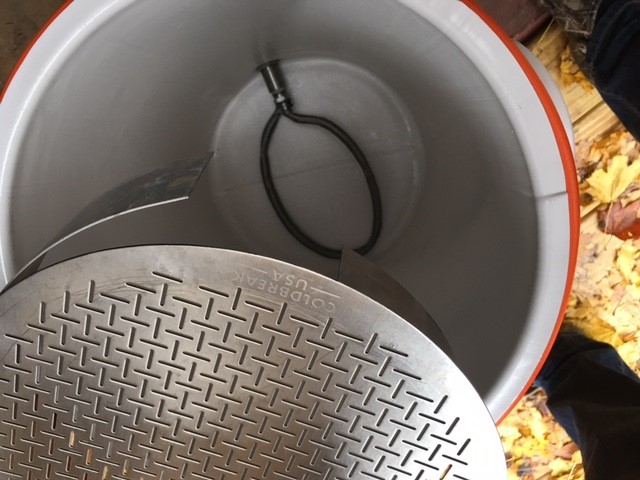I am having problems with my efficiency and I just dont understand why. I have ready about mashing and efficiency but I guess Im just not understanding what I am doing wrong. Dont get me wrong, my beer is tasting great but Im adjusting my grain bill for an expected 63-68% efficiency. I would love to get up at 70-75% if at all possible. Any suggestions are welcome.
I use http://www.brew365.com/mash_sparge_water_calculator.php to calculate my water numbers. I use a 10 gallon Igloo mash tun and a 10 gallon kettle. I hit my mash temps usually 150-151 and they stay at that my mash temp consistently.
Basically here is my process for 15 # grain (crushed at LHBS 1 week before, 5.25 gal batch, 6.75 boil, 151 mash temp, I calculated that I would need ~ 9.75 gallons of water, 5 strike, 4.75 sparge. I adjust for my equipment and use 5.25 to strike and 4.5 sparge (I measure using my kettle markings so they are approximate measurements):
1. I boil 2 gallons of water to heat up the mash tun walls. Then empty.
2. I heat 5.25 gal of water to a strike temp of 162. Add to the mash tun. Add grain hit 151.
3. I had a bunch of things to do so my mash time ended up being 2 hours on the nose (I usually do 1 hour).
4. I heated 4.5 gal of sparge water to 180 for fly sparging and I add a layer of tin foil with holes over the grain bed. I then slowly release 2 quarts of the first runnings and add back to the mash tun.
5. Then I fly sparge about a quart- 2quarts at a time, 180 water. The grain bed temp doesnt really raise.
I hope I made my process clear. My above beer, at a 70% eff wouldve had an OG of 1.075 but I ended up at 1.066. Again, my beer tastes perfectly good but I would like to work on getting my efficiency up. So what can I do better?
I use http://www.brew365.com/mash_sparge_water_calculator.php to calculate my water numbers. I use a 10 gallon Igloo mash tun and a 10 gallon kettle. I hit my mash temps usually 150-151 and they stay at that my mash temp consistently.
Basically here is my process for 15 # grain (crushed at LHBS 1 week before, 5.25 gal batch, 6.75 boil, 151 mash temp, I calculated that I would need ~ 9.75 gallons of water, 5 strike, 4.75 sparge. I adjust for my equipment and use 5.25 to strike and 4.5 sparge (I measure using my kettle markings so they are approximate measurements):
1. I boil 2 gallons of water to heat up the mash tun walls. Then empty.
2. I heat 5.25 gal of water to a strike temp of 162. Add to the mash tun. Add grain hit 151.
3. I had a bunch of things to do so my mash time ended up being 2 hours on the nose (I usually do 1 hour).
4. I heated 4.5 gal of sparge water to 180 for fly sparging and I add a layer of tin foil with holes over the grain bed. I then slowly release 2 quarts of the first runnings and add back to the mash tun.
5. Then I fly sparge about a quart- 2quarts at a time, 180 water. The grain bed temp doesnt really raise.
I hope I made my process clear. My above beer, at a 70% eff wouldve had an OG of 1.075 but I ended up at 1.066. Again, my beer tastes perfectly good but I would like to work on getting my efficiency up. So what can I do better?












































![Craft A Brew - Safale S-04 Dry Yeast - Fermentis - English Ale Dry Yeast - For English and American Ales and Hard Apple Ciders - Ingredients for Home Brewing - Beer Making Supplies - [1 Pack]](https://m.media-amazon.com/images/I/41fVGNh6JfL._SL500_.jpg)














